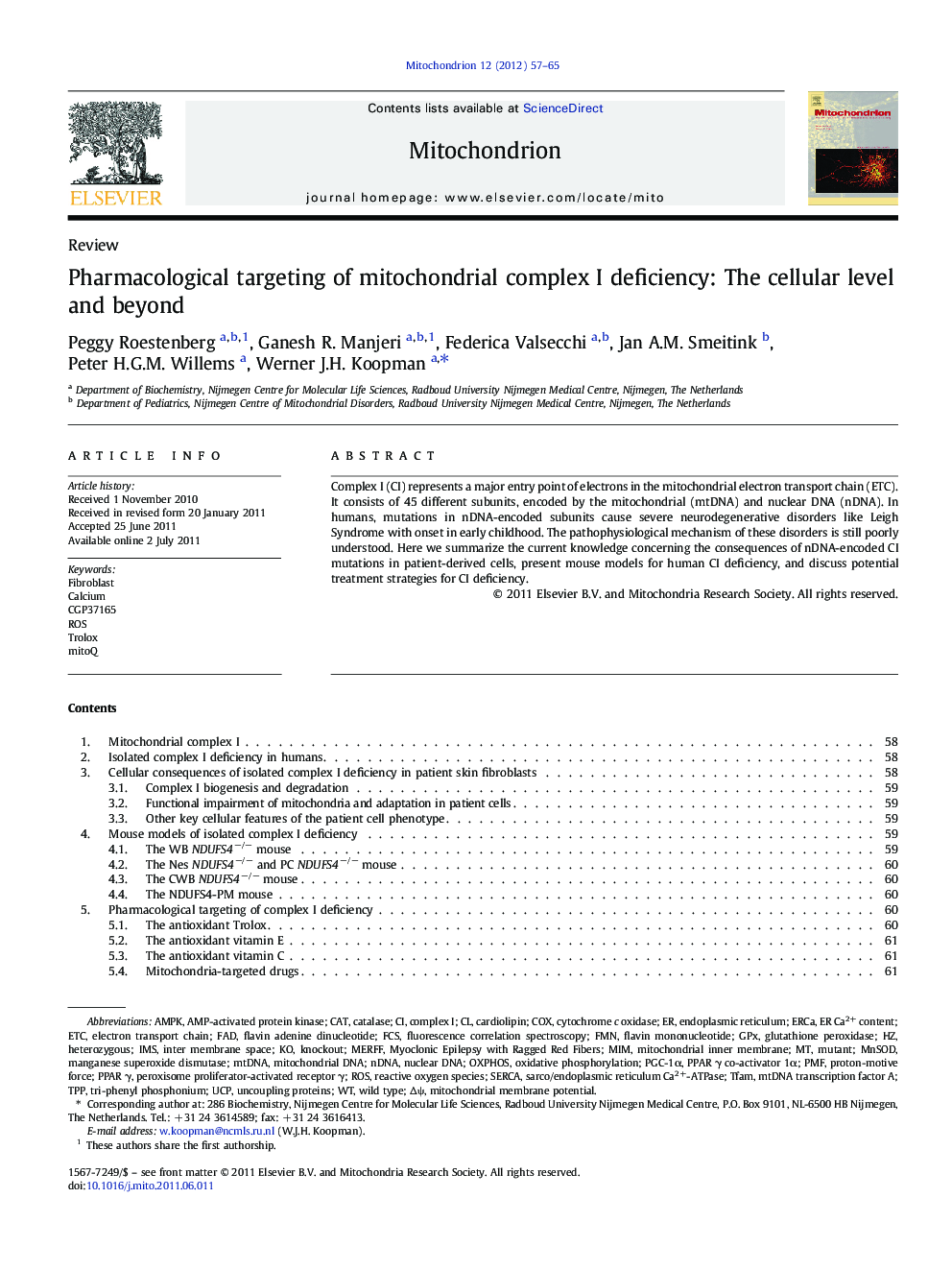| Article ID | Journal | Published Year | Pages | File Type |
|---|---|---|---|---|
| 10883137 | Mitochondrion | 2012 | 9 Pages |
Abstract
Complex I (CI) represents a major entry point of electrons in the mitochondrial electron transport chain (ETC). It consists of 45 different subunits, encoded by the mitochondrial (mtDNA) and nuclear DNA (nDNA). In humans, mutations in nDNA-encoded subunits cause severe neurodegenerative disorders like Leigh Syndrome with onset in early childhood. The pathophysiological mechanism of these disorders is still poorly understood. Here we summarize the current knowledge concerning the consequences of nDNA-encoded CI mutations in patient-derived cells, present mouse models for human CI deficiency, and discuss potential treatment strategies for CI deficiency.
Keywords
nDNAPPAR γUCPMitoQTFAMPGC-1αMnSODFCSPMFAMPKOXPHOSGPXFMNflavin adenine dinucleotideCOXCATTPPIMSAMP-activated protein kinaseMitochondrial DNANuclear DNAROSΔψFADTroloxUncoupling proteinsMutantmtDNAelectron transport chainsarco/endoplasmic reticulum Ca2+-ATPasemanganese superoxide dismutasecytochrome c oxidaseendoplasmic reticulummyoclonic epilepsy with ragged red fibersfluorescence correlation spectroscopyMitochondrial inner membraneOxidative phosphorylationflavin mononucleotideFibroblastSERCAComplex IMIMknockoutwild typeProton-motive forceheterozygousETcMitochondrial membrane potentialCatalaseCardiolipinCalciumglutathione peroxidaseReactive oxygen speciesperoxisome proliferator-activated receptor γ
Related Topics
Life Sciences
Biochemistry, Genetics and Molecular Biology
Biophysics
Authors
Peggy Roestenberg, Ganesh R. Manjeri, Federica Valsecchi, Jan A.M. Smeitink, Peter H.G.M. Willems, Werner J.H. Koopman,
